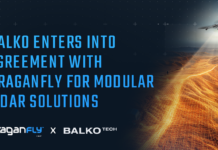Volvo’s New Electric EX90: A Technological Marvel for the Future
Volvo Cars has recently unveiled its latest offering, the fully electric EX90, which is now making its way from the assembly line in Charleston, South Carolina, to dealerships across the United States. This state-of-the-art SUV represents a significant leap forward in automotive technology, underpinned by advanced computing and safety features designed to benefit customers for years to come.
Advanced Technology at the Heart of EX90
At the core of the Volvo EX90 is the NVIDIA DRIVE Orin system-on-a-chip (SoC), a powerful piece of technology capable of performing over 250 trillion operations per second (TOPS). This system utilizes the NVIDIA DriveOS, which is a high-performance operating system designed specifically for automotive applications. Despite its incredible processing power, the DRIVE Orin SoC is remarkably compact, roughly the size of a postage stamp.
The primary role of this sophisticated compute architecture is to manage all vehicle functions. These include enabling safety features and driving assistance, supporting the development of autonomous driving capabilities, and ensuring an excellent user experience. Essentially, it acts as the vehicle’s brain, processing data from various sensors in real-time to maintain safety and provide assistance to the driver.
A Suite of Advanced Sensors
The Volvo EX90 is equipped with an array of sensors, making it one of the most advanced vehicles in terms of safety and driving assistance. This sensor suite includes radar, lidar, cameras, and ultrasonic sensors, among others. These sensors work together to create a 360-degree view around the vehicle, providing comprehensive data to the NVIDIA DRIVE Orin SoC for real-time processing. This setup ensures that the vehicle can detect and respond to its surroundings promptly, reinforcing Volvo’s commitment to safety.
Future-Ready with DRIVE Thor
Looking ahead, Volvo Cars has announced plans to migrate its future vehicle fleets to the next-generation NVIDIA DRIVE Thor SoC. This new system promises to be even more powerful, boasting 1,000 TOPS and improving energy efficiency sevenfold compared to the current DRIVE Orin SoC. The DRIVE Thor processor incorporates NVIDIA’s latest Blackwell GPU architecture, opening up new possibilities for both in-car and surrounding environment interactions.
This advanced platform will not only enhance the capabilities of advanced driver-assistance systems (ADAS) but also pave the way for autonomous driving features and new in-vehicle experiences powered by generative artificial intelligence (AI). According to Volvo Cars CEO Jim Rowan, the integration of NVIDIA DRIVE Thor will make their in-house developed software more scalable across the product lineup, improve car safety, deliver exceptional customer experiences, and increase profit margins.
Strategic Investment in AI Training
Volvo Cars and its software subsidiary, Zenseact, are making substantial investments in NVIDIA DGX systems for AI model training in the cloud. These high-performance systems are essential for managing the vast amounts of data required to train AI models safely. This investment ensures that future Volvo fleets will be equipped with the most advanced and thoroughly tested AI-powered safety features.
The NVIDIA DGX systems provide the computational power needed to train AI models efficiently. Transportation companies use these systems to accelerate autonomous technology development in a cost-effective and scalable manner. Volvo Cars and Zenseact’s AI training hub in the Nordics will leverage these systems to advance various aspects of ADAS and autonomous driving software development.
A significant advantage of this AI training hub is the optimization of the data annotation process. Data annotation involves identifying and labeling objects for classification and recognition, a traditionally time-consuming task. The DGX systems will streamline this process, enhancing the efficiency of AI model training and reducing time to market.
Enhanced Safety and Performance
With the NVIDIA DGX AI supercomputer, Volvo Cars’ AI training capabilities will receive a significant boost. Anders Bell, chief engineering and technology officer at Volvo Cars, emphasized that this in-house AI training center will become one of the largest in the Nordics. By leveraging NVIDIA technology and establishing the data center, Volvo aims to achieve high-performing AI quickly, ultimately making their products safer and more reliable.
The integration of NVIDIA technology both inside the car and in the cloud ensures that Volvo Cars and Zenseact can deliver vehicles that provide peace of mind to customers, regardless of where they drive. The combination of advanced sensors, powerful AI processing, and extensive data training positions Volvo as a leader in automotive safety and technology.
Conclusion
The fully electric Volvo EX90 represents a significant step forward in automotive technology, combining advanced computing power, a comprehensive sensor suite, and a commitment to safety. With the future integration of the NVIDIA DRIVE Thor SoC and substantial investments in AI training, Volvo Cars is poised to continue leading the way in the development of safe and autonomous vehicles.
For tech enthusiasts and automotive aficionados, the EX90 is a testament to the incredible advancements in vehicle technology. It showcases how cutting-edge computing and AI can enhance not only the driving experience but also the safety and reliability of modern vehicles. As Volvo Cars continues to innovate, the future of driving looks safer and more exciting than ever.
For more Information, Refer to this article.


































